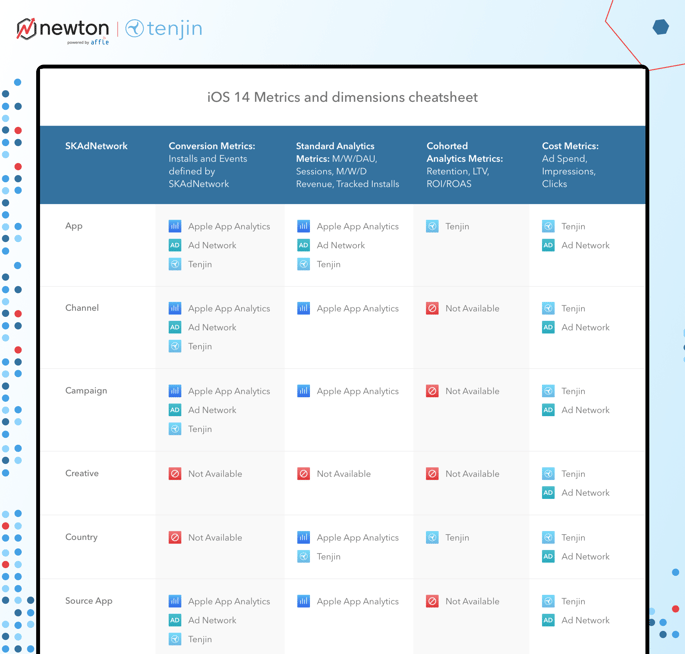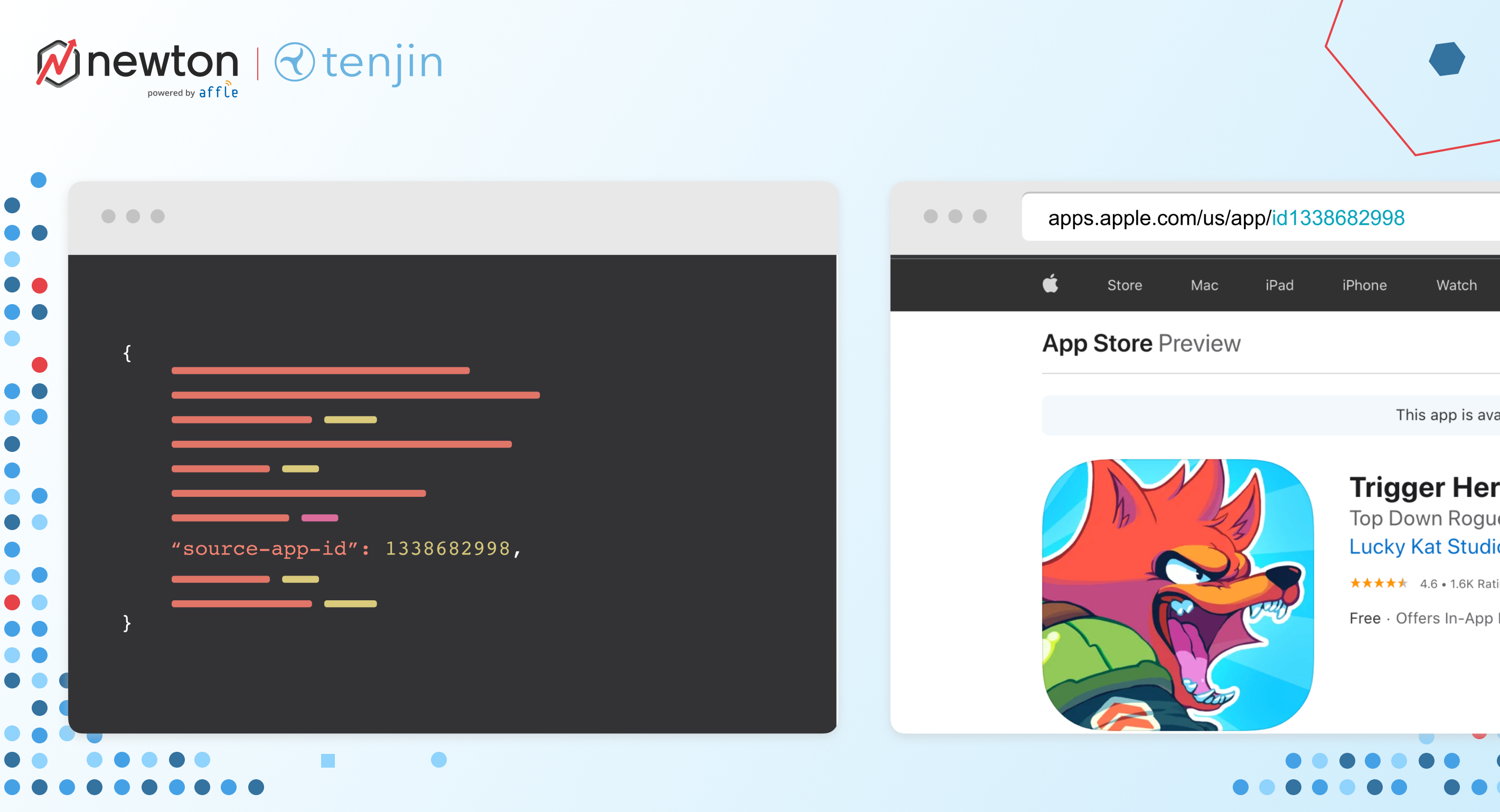
SKAdNetwork Explained: Navigating iOS user acquisition in 2024




SKAdNetwork is a powerful asset in the iOS app marketer's Martech stack. Learn more from our guest author, Roman Garbar from Tenjin - an advertising measurement solution for mobile publishers.
Navigating the intricate landscape of iOS user acquisition in 2024 requires a keen understanding of SKAdNetwork, Apple's privacy-first ad measurement framework for iOS. While Apple Search Ads is one of the best-performing channels out there, advertisers often need to mix it up with other SKAdNetwork channels.
In an era where safeguarding user privacy takes precedence, SKAdNetwork plays a central role in iOS advertising. The journey unfolds through the evolution of SKAdNetwork versions, with SKAdNetwork 4 taking center stage. However, the road is not without its twists and turns, as the framework introduces limitations such as deliberate reporting delays, privacy thresholds, and constraints on post-install events. Despite these challenges, SKAdNetwork brings unique advantages to the space. As we embark on 2024, a comprehensive understanding of SKAdNetwork is indispensable for user acquisition managers navigating the dynamic terrain of iOS advertising.
SKAdNetwork Explained
In a nutshell, SKAdNetwork is a privacy-first ad measurement framework for iOS. It was specifically created to provide advertisers and ad networks with campaign performance data at an aggregated level, without exposing granular details.
What is SKAdNetwork (SKAN)?
In recent years, Apple has made considerable efforts to protect user privacy, and SKAdNetwork, which was first introduced nearly six years ago, is a key part of that effort. It represents the future of advertising analytics on iOS.
SKAdNetwork was created as an alternative to Apple’s Identifier for Advertisers (IDFA), a common advertising ID tied to a user’s device. IDFA allows advertisers to precisely track user interactions with ad campaigns. When SKAdNetwork was first rolled out in March 2018, it didn't immediately affect the mobile marketing industry. Advertisers kept using IDFA as usual, unprepared for what was to come. However, in June 2020, with a growing focus on privacy and personal data value, Apple surprised the mobile advertising industry by announcing significant changes to how advertisers could access IDFA.
The major change was the introduction of app tracking transparency (ATT), which required users to “opt-in” to share their data with advertisers each time they opened a new app. Advertisers were then able to keep using the familiar deterministic attribution with IDFA for those who opted in. Those who didn’t “opt-in” could no longer be tracked the same way. It has become more important than ever for advertisers to find alternative ways of tracking users. Initial data suggests that only about 15% of users opted in.
In other words, for these users who didn’t opt in or chose not to share their data, advertisers had to rely on more subtle signals within the anonymized SKAdNetwork.
How does SKAdNetwork work?
Apple employs a postback system to inform advertisers and ad networks when a user has completed an app install or an in-app action. This process ensures that all data is shared in an aggregated and privacy-centric manner, preventing access to user-level details or the identification of acquired users.
While the initial explanation may seem straightforward, the intricacies lie in the details. Delving into these nuances becomes paramount for harnessing the full potential of SKAdNetwork in 2024.
What is the difference between SKAdNetwork versions?
Despite being in use for over a year and a half, SKAdNetwork 4's attribution currently hovers around 20% of users. This limited adoption can be largely attributed to the prevalent use of SKAdNetwork 3 by the majority of ad networks.
For a detailed comparison between SKAdNetwork 3 and 4, check out this informative video.
What are SKAdNetwork’s limitations?
The privacy-centric foundation of SKAdNetwork introduces a range of constraints that, when scrutinized from the advertiser's standpoint, might seem unconventional or counterintuitive. Delving deeper into these limitations provides insights into their implications for the advertising landscape.
No real-time or even close to real-time data.
When it comes to reporting conversions, SKAdNetwork operates with deliberate delays. Following an app install, SKAdNetwork waits a minimum of 24 hours before reporting back a conversion. Apple incorporates a random timer into the equation, injecting variability into the reporting delay. This randomization ensures that the reporting patterns do not follow a constant, predictable rhythm.
As a result, the introduction of this random timer adds an element of unpredictability to the reporting mechanism, contributing to the privacy-centric nature of SKAdNetwork. This intentional delay and variability aim to obscure the precise timing of events, safeguarding user privacy while introducing an additional layer of complexity for advertisers.
Privacy Threshold / Crowd Anonymity
In the realm of SKAdNetwork, a noteworthy aspect is the existence of a privacy threshold that dictates the flow of data. Until the volume of app installs surpasses this threshold, marketers may find themselves with a restricted amount of data at their disposal. This threshold serves as a gatekeeper, allowing data to flow more substantially once a certain volume of app installs is achieved.
Enter SKAdNetwork 4, where the dynamics transform. In this iteration, the privacy thresholds step aside to make way for a concept known as "crowd anonymity." The type of data and the level of detail are going to depend on the tier of anonymity. More on SKAdNetwork data anonymity.
Not enough post-install events
SKAdNetwork restricts the number of post-install events that can be sent back to ad networks. In the case of SKAdNetwork 3, only one post-install event is permitted, limiting the scope of insights that can be conveyed. With the introduction of SKAdNetwork 4, there's a slight expansion, allowing for the transmission of three post-install events. This constraint on the quantity of post-install events underscores the need for strategic selection and the prioritization of events that hold the utmost significance for advertisers.
No re-engagement support
As of now, neither SKAdNetwork 4 nor any of its predecessors supports the attribution of re-engaged users. This limitation has been a notable aspect of the framework. However, there's a ray of hope on the horizon, as Apple has indicated its commitment to addressing this issue in the upcoming SKAdNetwork 5. The anticipated release of SKAdNetwork 5 is expected to introduce support for attributing re-engaged users.

SKAdNetwork release has introduced an additional layer of data complexity, posing new challenges for user acquisition managers. In a landscape where discrepancies were already a hurdle, SKAdNetwork has raised the bar even higher. Understanding how to compare SKAdNetwork data with other sources is crucial for navigating this terrain effectively. It's not only important to grasp the metrics being compared but also to discern the source of those metrics. For instance, one ad network may exclusively rely on SKAdNetwork Conversion Values, while another incorporates deterministic attribution. Recognizing these variations is essential for accurate comparisons. You can find some real-life examples in our guide here.
Advantages of SKAdNetwork
Believe it or not, there are also advantages to using SKAdNetwork when compared to the traditional deterministic attribution approach via IDFA.
User opt-in is not required
SKAdNetwork and App Tracking Transparency (ATT) operate entirely independently from each other. Whether a user opted in or out, when presented with ATT advertisers, can attribute users through SKAdNetwork.
SKAdNetwork is free
Apple doesn’t charge for using SKAdNetwork. With that said, there is a technical barrier that is preventing advertisers from accessing the data directly. Therefore, the majority of advertisers are using Mobile Measurement Partners (MMPs), to analyze SKAdNetwork data. Tenjin users can get access to SKAdNetwork data for free.
Transparent traffic source

Traditionally, ad networks have concealed their sources of traffic, including app names, from advertisers. However, under SKAdNetwork, this practice is no longer feasible. One of the data points in SKAdNetwork shared with advertisers is 'source-app-id,' which aligns with the app ID in the App Store. This provides advertisers with significantly enhanced clarity. Read more about SKAdNetwork install sources here.
Better out-of-the-box fraud protection.
SKAdNetwork boasts another advantage—reducing fraudulent attributions by elevating the technical obstacles for fraudsters. In the past, bad actors could manipulate the system effortlessly, employing tactics like hidden adverts, fake ads, or fake clicks due to the absence of a 'middleman' validating information between the user and publisher. SKAdNetwork enhances security by incorporating a cryptographic signature to each ad impression, verifying the integrity of the data without compromising any user information that viewed or clicked on the ad. With SKADNetwork in place, it becomes difficult to target the audience as per the user information. Try using custom product pages that can be customized for different sets of audiences.
Summary
As we step into 2024, the focus on privacy in mobile advertising is more prominent, and SKAdNetwork plays a central role in iOS advertising. For user acquisition managers, it's important to be aware of the limitations and advantages of this framework. Understanding SKAdNetwork is essential for staying informed in the evolving landscape of user acquisition on iOS. Despite being around for nearly six years, only a minority of advertisers are fully capitalizing on the framework's potential.
About the Author

Roman Garbar is the Marketing Director at Tenjin, a free-to-start, pay-as-you-grow advertising measurement solution for mobile publishers. Roman has been at the forefront of understanding and leveraging SKAdNetwork since its early days. Recognized as a distinguished thought leader in the realm of mobile marketing, he brings a deep and nuanced perspective to advertising
